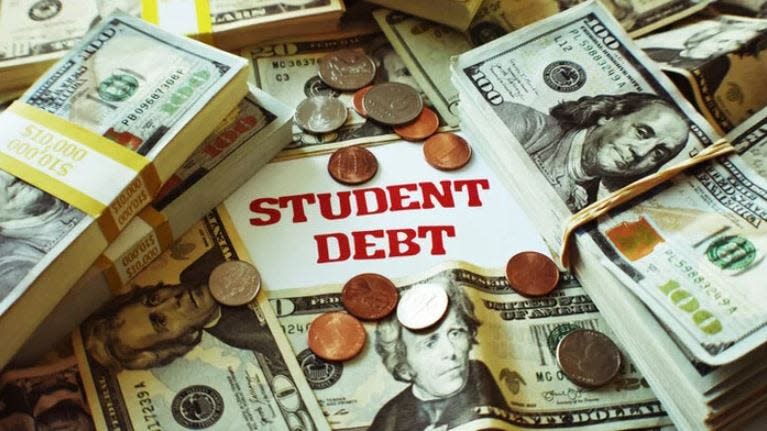Student-loan debt: Where does Vermont and its colleges stand?
In the wake of the June 30 6-3 ruling, in which the Supreme Court struck down President Joe Biden’s student-loan cancellation plan, students in Vermont – and around the country – are feeling distressed and concerned about the future.
Biden’s one-time relief plan would have canceled $400 billion in debt, offering loan forgiveness of up to $20,000 for up to 43 million borrowers. Eligible borrowers included individuals whose annual income falls at $125,000 or below, or married people or heads of household whose annual income falls at $250,000 or below. The Department of Education was to provide up to $20,000 in relief for recipients of Pell Grants and up to $10,000 for others.

Where does Vermont stand in terms of student loan debt?
Vermont has the 11th highest average federal student loan debt in the country, according to the Education Data Initiative. Compared to other states, fewer students in Vermont have student loan debt, but the average debt per borrower is greater. As of 2022, state residents a total of $2.9 billion in student debt, an average of $37,516 per borrower.
That means to pay off Vermont's average student loan debt in 10 years, a borrower would need to pay $312.63 monthly.
Private loans are not factored into the Education Data Initiative's numbers. Private loans are taken out from banks, credit unions, or other financial institutions, as opposed to the government. Private loans do not offer the same consumer protections and repayment protections as federal loans and typically cost more. In Vermont, 57% of college students graduate with debt, and 17% of students graduate with private debt.
In 2020, Institute for College Access and Success completed The Project on Student Debt, compiling data of student debt in graduating classes of 2020 across all 50 states and at a myriad of different institutions, including public, private, and technical schools. These numbers only reflect student debt from those who obtained bachelor's degrees.
Here is a breakdown of student debt by Vermont school, as of 2020:
Public four-year institutions
University of Vermont: Students graduating with student debt, 58%; average debt, $35,159. Students graduating with private debt, 17%; average debt, $45,588.
Vermont Technical College: Students graduating with student debt, 82%; average debt, $30,865. Students graduating with private debt, 41%. average debt, $19,514.
Private institutions
Landmark College: One of the only accredited colleges in the country designed exclusively for students with learning differences has the highest average debt out of all Vermont colleges, but the second lowest percentage of students graduating with debt. Students graduating with student debt, 38%; average debt, $52,084. Students graduating with private debt, 10%; average debt, $12,983.
Champlain College: Students graduating with student debt, 72%; average debt, $42,971. Students graduating with private debt, 25%; average debt, $53,065.
St. Michael's College: Students graduating with student debt, 72%; average debt, $38,465. Students graduating with private debt, 23%; average debt, $44,497.
Goddard College: Students graduating with student debt, 64%; average debt, $29,135. Students graduating with private debt, 4%; average debt, $14,352.
Bennington College: Students graduating with student debt, 59%; average debt, $28,854. Students graduating with private debt, 7%; average debt, $43,360.
Middlebury College: Students graduating with student debt, 37%; average debt, $22,146. Students graduating with private debt, 5%; average debt, $46,491.
See the statistics of neighboring states by viewing the Institute for College Access and Success's interactive map.
Contact Kate Sadoff at ksadoff@gannett.com.
This article originally appeared on Burlington Free Press: Court strikes down student loan forgiveness: Where Vermont stands

